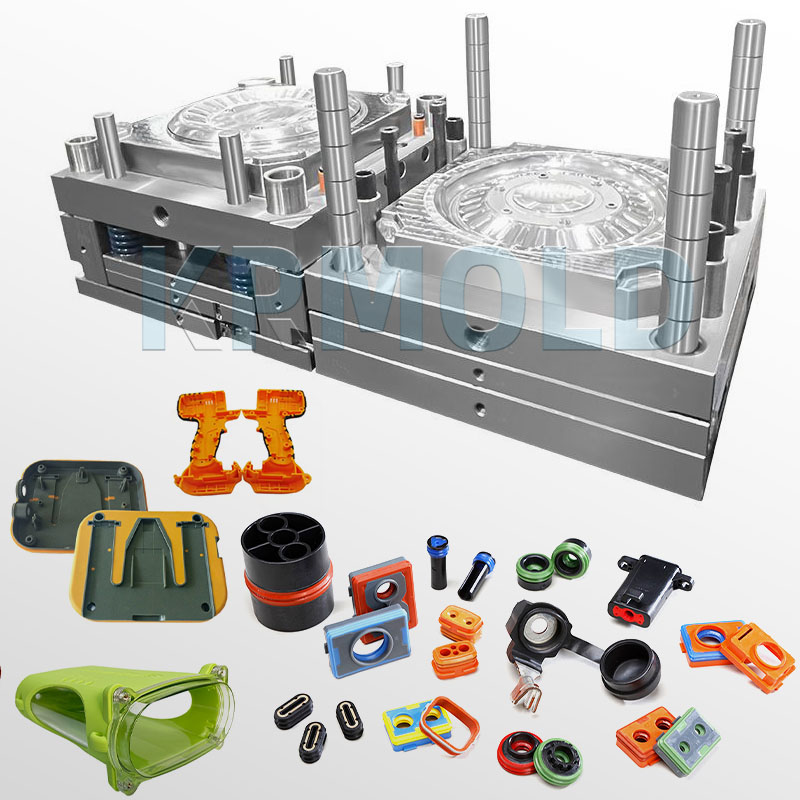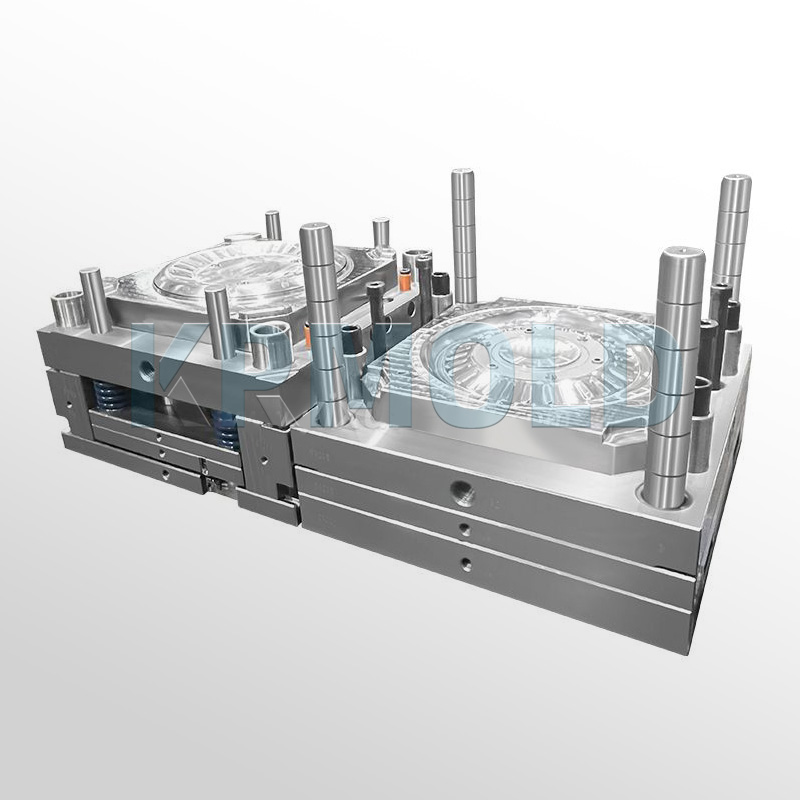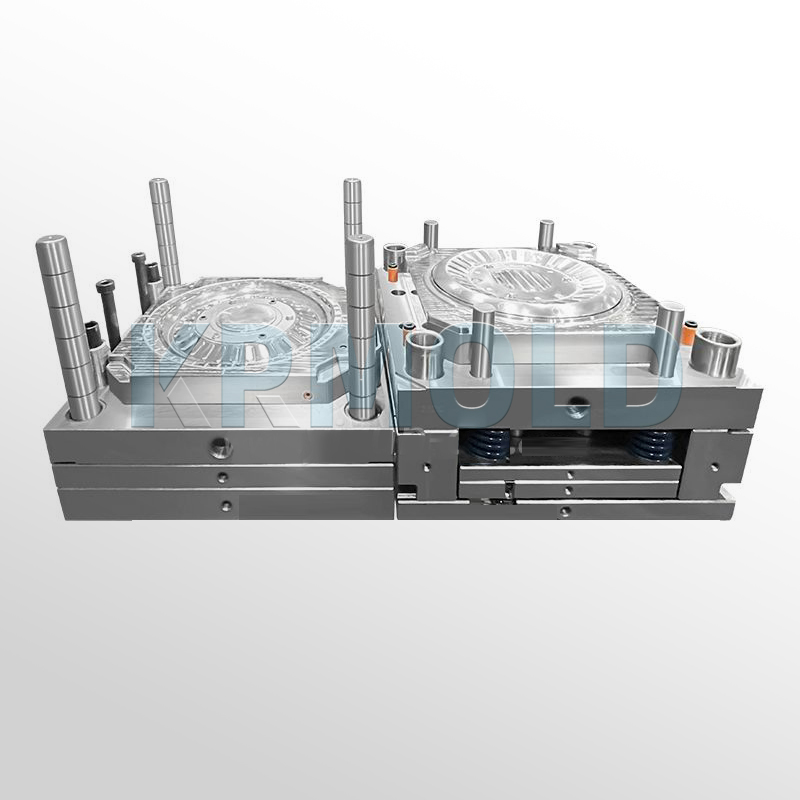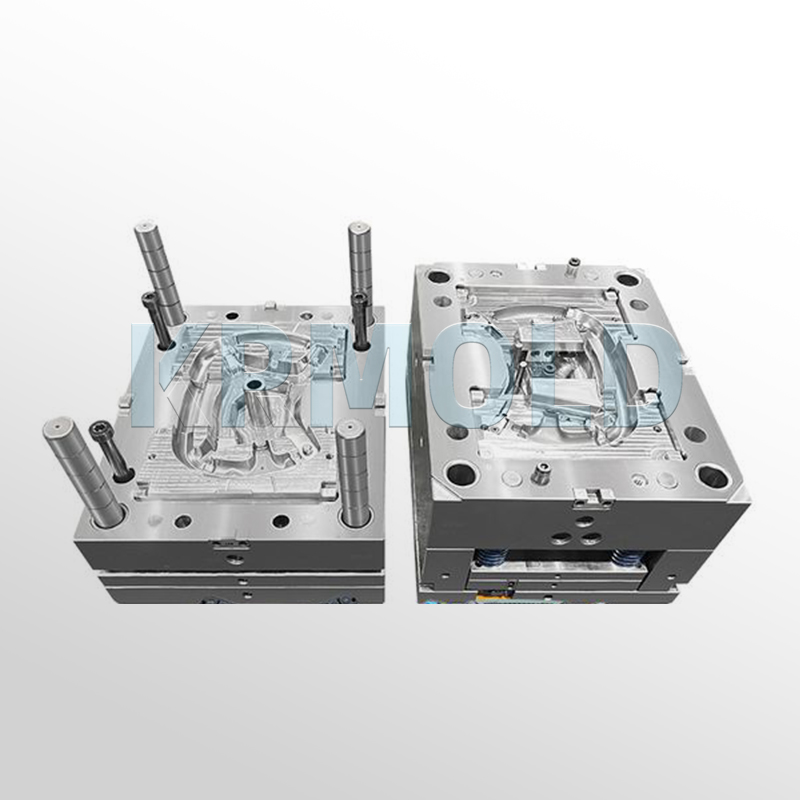
KINGREAL UNIVERSAL IND., LTD
Phone
+86-13702855825| 1 | Insufficient Injection Speed |
| 2 | Plastic Shortage |
| 3 | The Screw Does Not Leave Enough Screw Padding at End of Stroke |
| 4 | Changes in Running Time |
| 5 | The Temperature of Injection Cylinder is Too Low |
| 6 | Insufficient Injection Pressure |
| 7 | The Nozzle Part is Sealed |
| 8 | The Heater Outside Nozzle or Injection Cylinder Does Not Work |
| 9 | Injection Time is Too Short |
| 10 | Plastic Sticks to Hopper Throat Wall |
| 11 | The Capacity of Plastic Overmolding Machine is Too Small |
| 12 | The Mold Temperature is Too Low |
| 13 | Failure to Clean Anti-rust Oil in Mold |
| 14 | Damage to Check Ring and Backflow of Molten Material |
Overmolding is an important processing method in modern manufacturing and is widely used in electronics, automobiles, medical and other industries. Although the early manufacturing process of the plastic injection mold has been completed, there are still many potential problems in the plastic overmolding process, which may lead to incomplete or substandard injection molded parts. In this article, KRMOLD will discuss in detail the most common problems and solutions in the overmolding process. |  |
1. Insufficient Injection Speed
In the overmolding process, insufficient injection speed is one of the main causes of defects in injection molded parts. The molten plastic will cool in the mold if too slow injection speed is used, preventing it from filling all sections of the mold.
This might cause inadequate structural strength in addition to changing the appearance of the final result.
Solution
To solve this issue, the injection rate might be raised to guarantee that the molten plastic may swiftly fill the mold. Furthermore to reach the best injection velocity, the plastic overmolding machine's parameter settings may be altered.
2. Plastic Shortage
Plastic shortage often occurs during overmolding. Lack of plastic in the hopper typically results in this condition, therefore stopping the plastic overmolding machine from getting the necessary material.
Solution
First order to address this issue is checking the hopper's plastic level. Should not enough plastic be discovered, the substance should be replenished in time to guarantee the continuity of the manufacturing process.
3. The Screw Does Not Leave Enough Screw Padding at End of Stroke
In overmolding, if the screw does not leave enough screw padding at the end of the stroke, it may cause defects in the injection molded parts.
Solution
Check the setting of the injection stroke to ensure that the screw can leave enough padding at the end of the stroke. If necessary, make appropriate adjustments to avoid affecting subsequent production.
4. Changes in Running Time
Changes in the running time of the plastic overmolding machine may also cause defects in overmolding. If the running time is unstable, it may cause fluctuations in the quality of the injection molded parts.
Solution
Regularly review the operating condition of the machine to guarantee stable running time. The same time, the monitoring system can be used to log and analyze running time data for prompt corrections.
5. The Temperature of Injection Cylinder is Too Low
Overmolding has extremely strict temperature requirements. If the temperature of the injection cylinder is too low, the plastic will not be fully melted, affecting the injection quality.
Solution
An easy solution to this is raising the melt temperature. Check the operating condition of the heater often to guarantee that it is running as it should.
6. Insufficient Injection Pressure
The plastic won't entirely fill the mold if injection pressure is not great enough, hence yielding imperfect injection molded components.
Solution
Increasing the injection pressure will successfully address this issue. Furthermore make sure the check valve is operating correctly by checking whether it is broken or fractured.



7. The Nozzle Part is Sealed
During the plastic overmolding process, the nozzle part is sealed, which may cause the molten plastic to be unable to be smoothly injected into the mold.
Solution
Check the nozzle part regularly to ensure that there is no foreign matter or unplasticized plastic blocking. At the same time, the injection speed can be increased to reduce the residence time of the material in the nozzle part.
8. The Heater Outside Nozzle or Injection Cylinder Does Not Work
If the heater does not work properly, the quality of the injection molded part will be affected.
Solution
Check the outer layer of all heaters and use an ammeter to detect whether the energy output is normal. If any problems are found, replace or repair the heater in time.
9. Injection Time is Too Short
If the injection time is too short, the plastic will not be fully solidified, which will affect the strength and quality of the finished product.
Solution
Appropriately extend the injection time to ensure that the plastic can be fully cooled and solidified in the mold.
10. Plastic Sticks to Hopper Throat Wall
During the overmolding process, the plastic sticks to the hopper throat wall, which will cause the plastic in the hopper to flow poorly, thus affecting the injection quality.
Solution
Regularly clean the hopper and its throat wall to ensure that the plastic can flow smoothly into the injection machine.
11. The Capacity of Plastic Overmolding Machine is Too Small
If the capacity of the overmolding machine is insufficient, it may not meet the production needs, resulting in defects in the injection molded parts.
Solution
Before production, evaluate the capacity of the plastic overmolding machine and replace it with a larger overmolding machine if necessary to meet production needs.
12. The Mold Temperature is Too Low
If the mold temperature is too low, the plastic will cool too quickly in the mold, affecting the quality of the injection molded parts.
Solution
Appropriately increase the mold temperature to ensure that the plastic can maintain sufficient fluidity in the mold.
13. Failure to Clean Anti-rust Oil in Mold
The anti-rust oil remaining in the mold will affect the adhesion of the plastic, resulting in poor surface quality of the injection molded parts.
Solution
Before plastic overmolding, be sure to clean the anti-rust agent in the mold to ensure that the plastic can contact the mold well.
14. Damage to Check Ring and Backflow of Molten Material
Damage to the check ring may cause backflow of the molten plastic during the plastic overmolding process, thus affecting the quality of the finished product.
Solution
Regularly check and replace the check ring to ensure that it works properly to avoid backflow of the molten material.
Plastic overmolding is a complex process. Although the previous process has been completed, many problems still need to be paid attention to during the overmolding process.
This article summarizes the most common defects in plastic overmolding and their solutions. Through reasonable adjustment and careful inspection, the quality of the injection molded parts can be greatly improved and the smooth production can be ensured.
I hope this article can provide valuable reference and help for people in the industry engaged in overmolding.